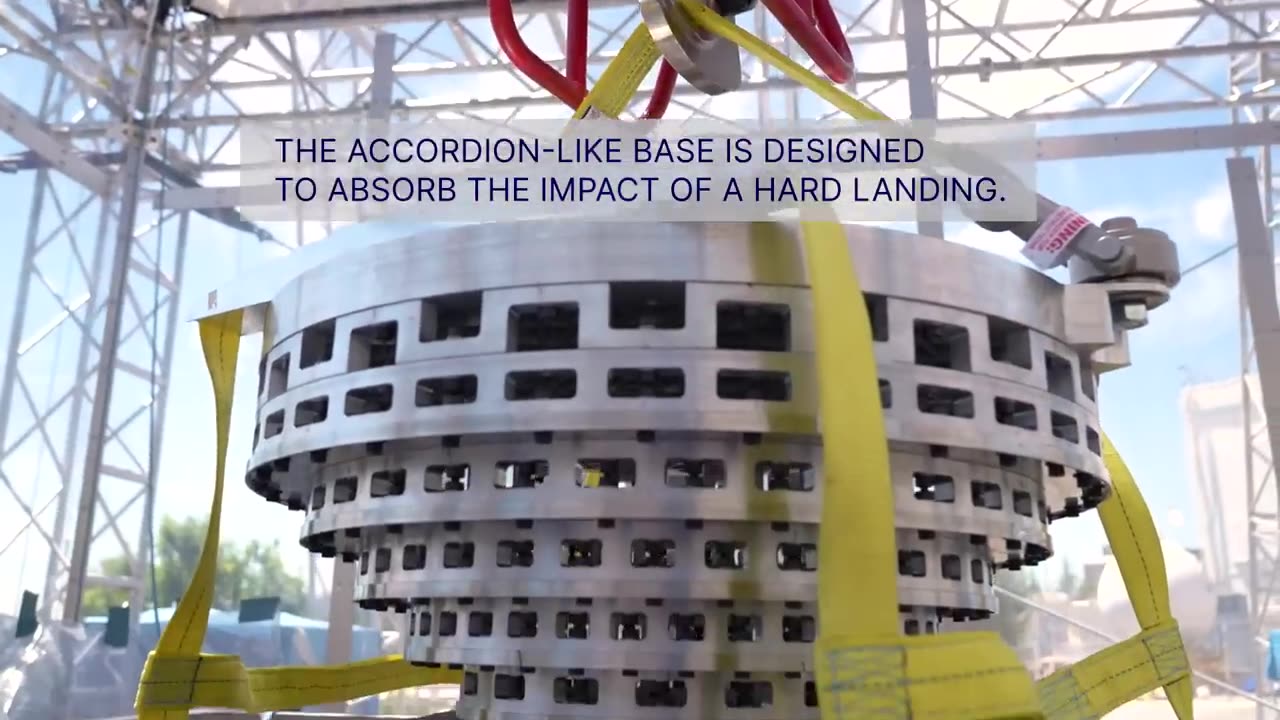Premium Only Content

NASA's Experiments with Controlled Landings on Mars
Imagine a groundbreaking approach to landing on Mars—one that involves controlled impact rather than the traditional methods. Meet the Simplified High Impact Energy Landing Device (SHIELD), a visionary lander concept undergoing rigorous testing at NASA's Jet Propulsion Laboratory (JPL). This innovation holds the promise of revolutionizing low-cost Mars missions.
Unlike conventional techniques relying on parachutes or retrorockets, SHIELD boasts an ingenious design featuring a collapsible, accordion-like base. This base is engineered to absorb the energy of impact during landing, thus offering a fresh alternative for future Mars landings. To assess its viability, a full-scale prototype of the base was put to the test on August 12, 2022.
In an audacious experiment, the prototype was hurled from the apex of a nearly 90-foot-tall drop tower at JPL. To simulate conditions more extreme than those found on Mars, a steel plate was strategically positioned to intensify the impact. Astonishingly, the design proved its mettle—enduring the crash against the steel plate at a remarkable speed of 110 mph (177 kph). Even more impressively, several electronic components housed within the SHIELD prototype, including a smartphone, emerged unscathed from the ordeal.
Credit: NASA/JPL-Caltech/California Academy of Sciences
Embark on a journey of innovation and discovery as NASA pioneers new paradigms for Mars exploration, driven by daring concepts like SHIELD.
Tags: #MarsLanding #InnovativeConcepts #SHIELDConcept #SpaceExploration #AerospaceInnovation #MarsMissions #SpaceTechnology #NASA #JPL #ImpactEnergyLanding #RevolutionaryDesign #MarsExploration #SpaceScience #Astronomy #FutureMissions #ExplorationAdvancements
-
 1:35:12
1:35:12
Glenn Greenwald
6 hours agoCNN And Jake Tapper In Deep Trouble In Defamation Lawsuit: With Jonathan Turley; TikTok Ban, Trump's China Policy, And More With Arnaud Bertrand | SYSTEM UPDATE SHOW #390
53K28 -
 12:24
12:24
Dan Bongino Show Clips
6 hours agoPresident Trump Full Interview - 01/16/25
91.2K236 -
 UPCOMING
UPCOMING
Man in America
6 hours agoBig Pharma's Deadliest Lie is Being EXPOSED to the Masses w/ Jonathan Otto
4.91K1 -
 LIVE
LIVE
Precision Rifle Network
1 day agoS4E2 Guns & Grub - Training Vs. Competition
110 watching -
 LIVE
LIVE
Flyover Conservatives
20 hours agoGarrett Ziegler Breaks Down Special Councilor’s Report on Hunter Biden. Insights for Trump’s Top Picks. | FOC Show
398 watching -
 44:54
44:54
Steve-O's Wild Ride! Podcast
9 hours ago $6.20 earnedMark Wahlberg Threatened To Beat Up Jackass Cast Member - Wild Ride #251
71.1K9 -
 1:13:34
1:13:34
Josh Pate's College Football Show
3 hours ago $0.36 earnedCFB Dynasties & Villains | Marcus Freeman OR Ryan Day | 2025 Sleeper Teams | Cole Cubelic Joins
9.52K -
 1:00:26
1:00:26
The StoneZONE with Roger Stone
2 hours agoSHOCKING NEW TAPE PROVES LBJ KILLED JFK! | The StoneZONE w/ Roger Stone
27.6K9 -
 1:44:33
1:44:33
ObaTheGreat
4 hours agoCrypto vs The World w/ Oba The Great And YaBoySkey
24.6K1 -
 LIVE
LIVE
VOPUSARADIO
2 days agoPOLITI-SHOCK! "COUNTDOWN TO TRUMP" & THE GLOBALISTS BURNING IT ALL DOWN..LITERALLY!
81 watching